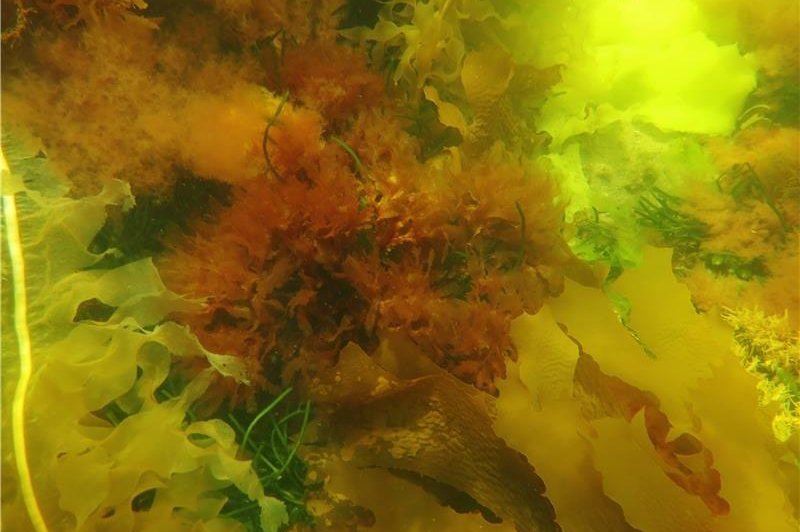Kelp and other seaweeds form a boundary microlayer featuring higher pH levels on their leaves. Photo by Institute for Marine and Antarctic Studies/University of Tasmania
March 21 (UPI) -- Ocean acidification is making it harder for calcifying marine species to construct their protective outer layers or shells. But new research suggests some organisms have found protection from lower pH levels among seaweed.
As ocean water soaks up excess CO2 in the atmosphere, pH levels drop. Seaweed absorbs CO2 during the day, however, reducing the acidity in the water immediately surrounding their leaves.
Researchers found a variety of calcifying species have found shelter in this so-called diffusive boundary layer.
When scientists studied this microlayer in the lab under various water flow and light conditions in the lab, they found the boundary boasts higher pH levels than surrounding seawater when water flow is slow.
"With the increasing risk of ocean acidification, small calcifying organisms such as bryozoans, tube-forming worms, small molluscs or crustaceans living on the blades might be able to better cope with this phenomenon," Fanny Noisette, a marine biologist at the University of Tasmania, said in a news release.
Tube worms and other bryozoans are filter feeders. Their abundance impacts a variety of other ecologically important species, including plankton. The latest findings, published this week in the journal Functional Ecology, suggest kelp and other seaweeds can provide these organisms temporary relief when acidity spikes.
"Some invertebrates are very small in their early life stages and could also find shelter in these microenvironments shaped by kelps," Noisette said. "Larvae, for example, are usually not able to regulate their internal pH and are more sensitive to decrease in seawater pH. By settling on the blades in their early stages of development, they might be able to temporary alleviate stress or train for the harsher conditions that await them in the open ocean."
The research confirms the findings of previous studies, which have revealed the ecological importance of seaweed communities, such as kelp forests.















